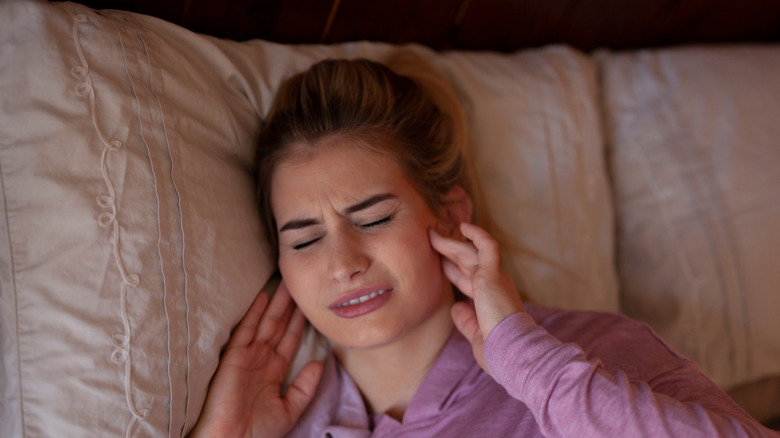For most individuals, simple tasks like chewing, talking, and turning the head from side to side can seem like an easy feat. Yet, for some, these everyday actions can seem to inspire a great amount of pain with no seeming reason as to why. They may wake up after a supposed good night’s sleep to find themselves with sore jaw muscles, cracked or broken teeth, or intense pain. If you find yourself waking up to symptoms like these, you should seek out the advice of a specialist to determine the cause.
Jaw pain is one of the most commonly reported symptoms of issues resulting from temporomandibular joint disorders (TMD) (via Mayo Clinic). These disorders also often include symptoms like clenching (bearing down or forcing the jaws closed hard) and grinding (lateral movement of the teeth against one another). Additionally, jaw clicks are commonly reported. These symptoms can be extremely painful and damaging to the appearance of your smile.
There’s still no direct cause known for TMD. However, it is believed that the condition originates from issues regarding the jaw or muscle structure (via WebMD).
Treatment for TMD can include a number of options, such as physical therapy exercises, wearing special dental devices to help protect the teeth, and even surgery. If you are suffering from symptoms related to TMD or are having pain in your temporomandibular joint, it may be time to speak to your dentist.
What is the difference between TMJ and TMD?

There is frequent confusion on what exactly TMJ is. Healthline explains that while it’s not uncommon to hear people use the terms TMJ and TMD interchangeably, they actually represent different things.
TMJ simply refers to the temporomandibular joint itself while TMD is a term classifying disorders or medical issues that are experienced in and around the joint. In many cases, individuals will refer to temporomandibular disorders as TMJ, making an association between the condition of TMD with the joint it most commonly affects (via WebMD).
More specifically, the TMJ is the hinge for your jaw which allow the bottom jaw to open and close. It is responsible for the movements of chewing, talking, and yawning, according to WebMD. There are temporomandibular joints on both sides of the jaw, connecting the skull and lower jaw while allowing sliding and hinging movements (via Healthline).


